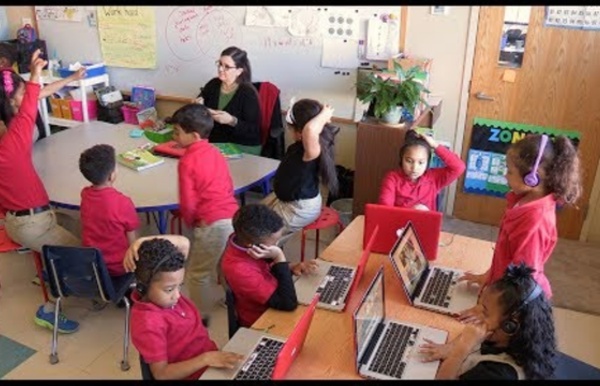



http://www.youtube.com/watch?v=Kg38A1ggYiE
Related: Reading Resources • Methods: Reading and Writing • TEP 521/SPED 525- Methods of Teaching Reading and WritingTEXT - Assessment, Flexible Grouping, and Research-Based Instructional Strategies: Powerful Tools for Co-Taught Classes By Tina Spencer, M.S., and Lee Anne Sulzberger, M.Ed. February/March 2013 Co-teaching is one option for delivering special education services to students with disabilities in general education classes (Friend, 2007). Within this model, two or more professionals deliver content grounded in purposeful instructional intensity to a diverse group of students in the same classroom. Co-teaching partners can help meet the varying learning needs of students in their classes by adopting the principles of differentiated instruction.
TEXT - 8 Ways to Get Real With Student Differentiation Last fall, the Brookes Publishing team created a little poster about student differentiation that took off in a big way. Check it out: The poster went viral as educators shared their love for the Fair is Not Always Equal philosophy—but some teachers asked the tough questions about student differentiation. Realistically, how can we find time to differentiate our teaching for 30 students every single day?We also have the pressures of standardized testing.
TEXT - The Power of Words: On "Classics" and "Canon" (Opinion) The first step is admitting that your ideas need to change. I’ve been in a yearlong conversation with myself about “the canon.” I am, this year, teaching what I feel is a full-canon list (To Kill a Mockingbird, Lord of the Flies, Romeo and Juliet), as I’ve done in the past. I have always had my argument for it, that I could teach these books in ways that were powerful for my students as we discussed race, gender, class, and social justice.
TEXT - Universal Design for Learning: Meeting the Needs of All Students Katherine, a speech-language pathologist in a large elementary school, works hard to provide appropriate and relevant services to students in general education classrooms. She doesn't do much pull-out, instead preferring to work in classrooms using adapted classroom materials. As a result, she spends a lot of time modifying materials and developing personalized resources for specific students. As she packs up her bag filled with paperwork to finish at home, she thinks, "There must be a better way to meet the needs of all the students on my caseload." Katherine's situation is common for school-based SLPs. All of her students have different needs, abilities, and preferences.
TEXT - Building Culturally Responsive Classrooms with Digital Content By Dr. Karen Beerer Recently, during one of the professional development events I occasionally facilitate as Discovery Education’s Vice President of Learning and Development, I asked a group of building-level school administrators, “What keeps you up at night?” This question, asked as part of the process of framing the day’s learning targets, at first elicited a few laughs and a number of comments about late night eating and the recent Super Bowl. However, as we drilled a little further into the conversation, the administrators identified the ongoing challenge of meeting the needs of a very diverse group of learners as their number one concern. Defining diversity in the context of this challenge engendered its own discussion.
TEXT - Culturally Responsive Teaching & The Brain This school year, I have the privilege of working shoulder to shoulder with teachers who are rolling up their sleeves and asking hard questions about how they can better serve their under-performing students who are disproportionately English learners, poor students, and students of color. They are working to incorporate culturally responsive practices into their classrooms. I believe culturally responsive teaching (CRT) is a powerful method for accelerating student learning.